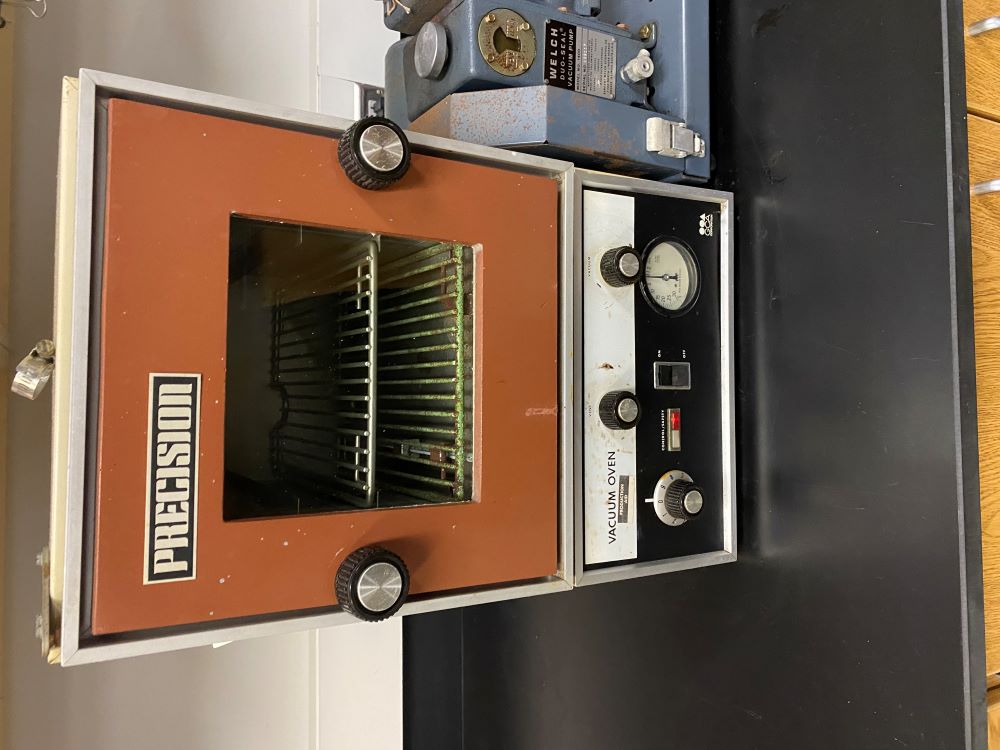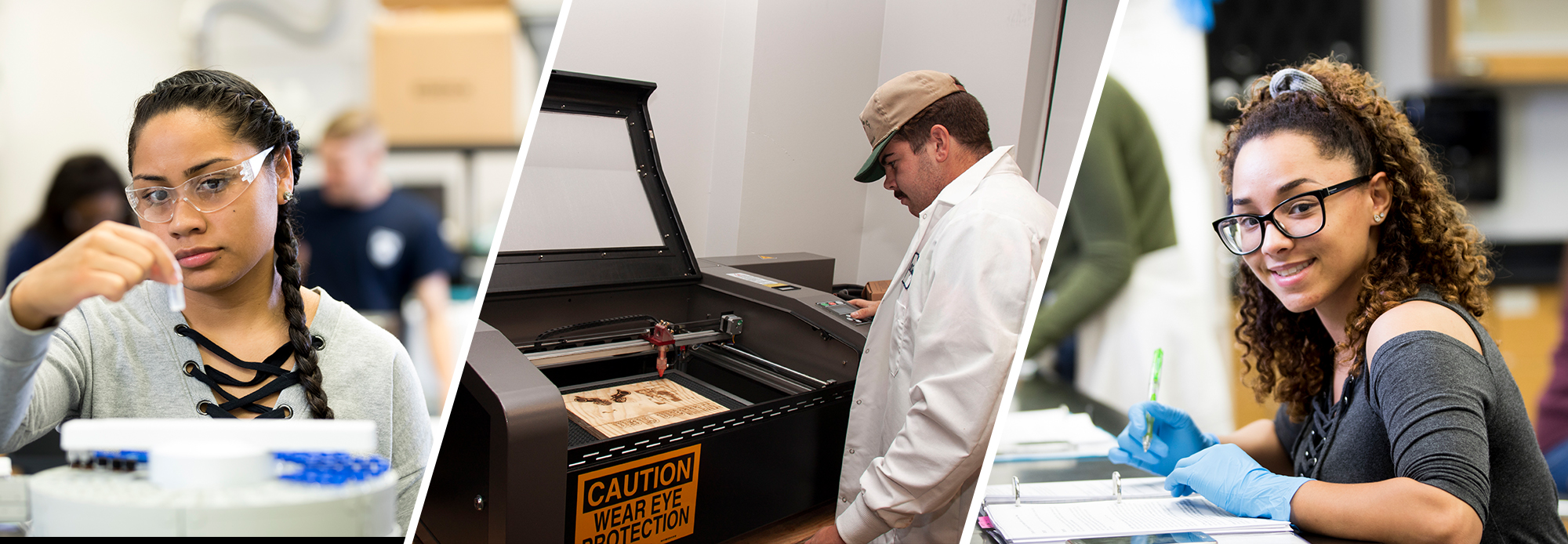Chemistry Resources
Single Crystal X-Ray Diffractometer by Rigaku Oxford Diffraction.
Acquired in 2020 for use in research and academic laboratory courses. XRD is employed for characterization of compounds from synthetic research. It is utilized for determination of crystal structure in terms of atom positions. For molecular compounds, XRD is used to determine absolute molecular structure. Classes that use this device are Chem3343 (Organic Analysis), Chem4332 (Advanced Inorganic Chemistry Lab), and Chem4491 (Special Problems in Research).
Fourier-transform infrared spectrometer (FTIR) by Thermo Fisher Scientific-US.
Acquired in 2017 , FTIR is a technique used to gain an infrared spectrum of absorption or discharge of a solid, liquid, or gas. The spectrometer collects high-resolution data over a wide spectral area. It is used in research to characterize molecular structure. It is an instrument utilized in multiple academic laboratory classes. Classes that use this device are Chem3314 and 3324 (Organic Chemistry), Chem3343 (Organic Analysis), and Chem4491 (Special Problems in Research).
Nuclear magnetic resonance (NMR) by Nanalysis Corporation.
Acquired in 2020, Nuclear Magnetic Resonance spectrometer is used as an analytical chemistry technique in cross-checking and research for deeming the content and pureness of the molecular structure sample. At Cameron University, it is employed in several academic laboratory classes. Classes that use this device are Chem3314 and 3324 (Organic Chemistry), Chem3343 (Organic Analysis), Chem4332 (Advanced Inorganic Chemistry Lab) and Chem4491 (Special Problems in Research).
Microwave Synthesizer by CEM Corporation.
The microwave synthesizer performs reactions at reflux, under a nitrogen environment, or under pressure. The microwave synthesizer is utilized in research and it is also utilized in our organic chemistry laboratory. Classes that use this device are Chem3314 and 3324 (Organic Chemistry), and Chem4491 (Special Problems in Research). 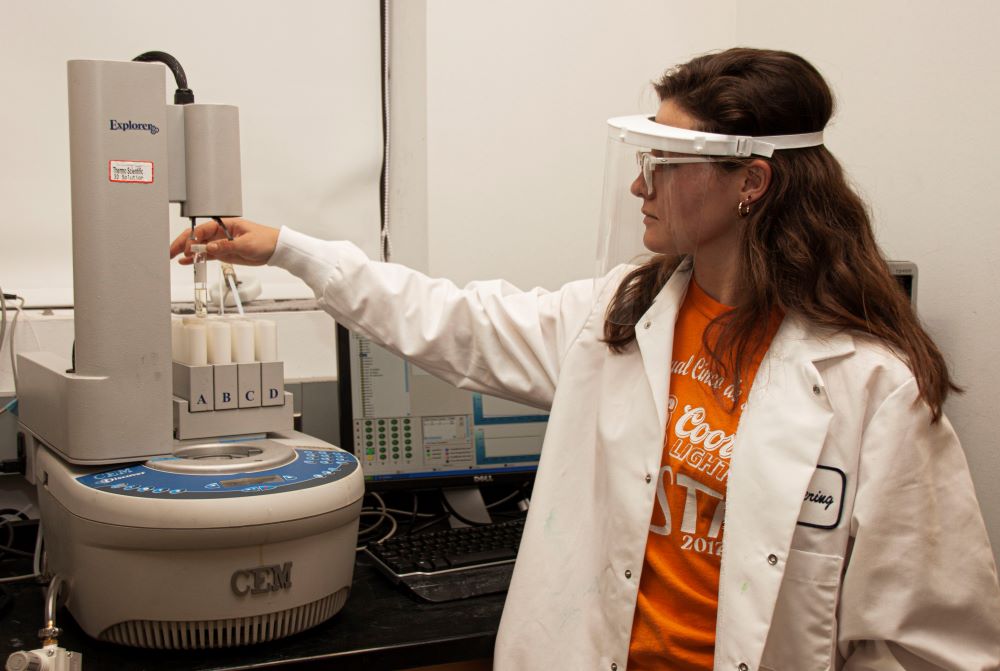
Differential Scanning Calorimeter (DSC) by TA Instruments
Acquired in 2017, this instrument measures temperatures and heat flows associated with thermal transitions in a material. This instrument is utilized in biochemical research and physical research. Classes that use this device are Chem4351 and 4361 (Physical Chemistry), Chem4401 and 4411 (Biochemistry), and Chem4491 (Special Problems in Research). 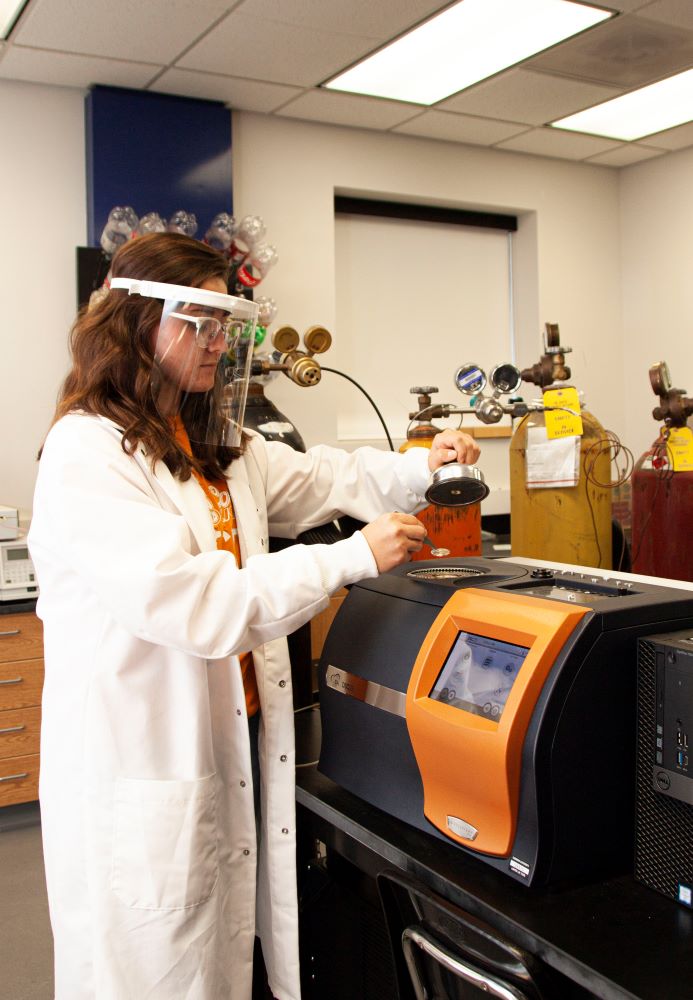
Gas Chromatography-Mass Spectrometer QP2020 by Shimadzu-
This instrument was acquired by Cameron University in 2018 and it separates components of a mixture and, then, determines the molecular mass of those components. The method of ionization allows for fingerprinting the identity of the components. Then, you are able to determine what is present and how much is present. Chem3232 (Quantitative Analysis). It is also utilized in Chem4025 (Instrumental Analysis), Chem3334 (Chemistry of Water and Wastewater), Chem3343 (Organic Analysis), and Chem4491 (Special Problems in Research).
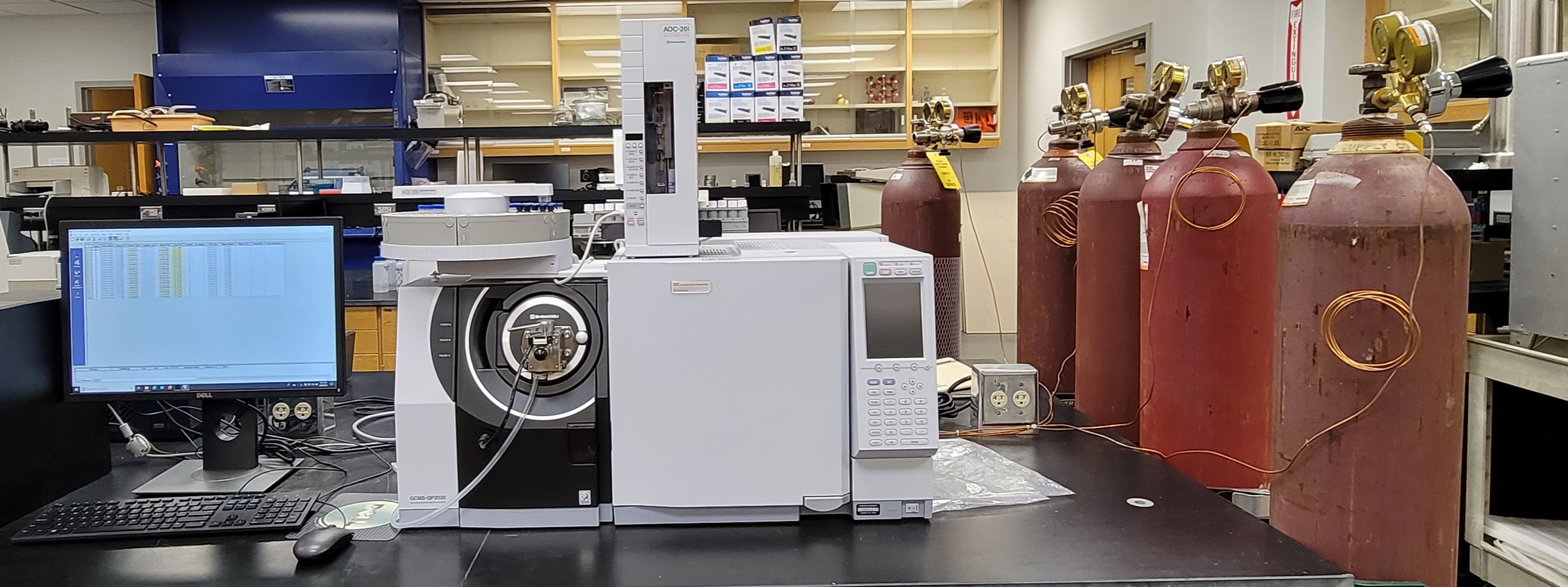
UV-Vis Spectrometer UV1800 Model by Shimadzu-
This instrument was acquired by Cameron University in 2015 and it measures the ultraviolet ray spectrum. Once you know the spectrum, then the instrument can be used as an analytical device to quantitate the amount present. This instrument can be employed to characterize a molecular structure. The student will first experience the instrument in Chem3232 (Quantitative Analysis). Subsequently, it is also utilized in Chem3334 (Chemistry of Water and Wastewater), Chem4025 (Instrumental Analysis), Chem4351 and 4361 (Physical Chemistry), Chem4332 (Advanced Inorganic Chemistry), Chem4401 and 4411 (Biochemistry), and Chem4491 (Special Problems in Research). *There are other UV-Vis Spectrometers available, although they are older models.
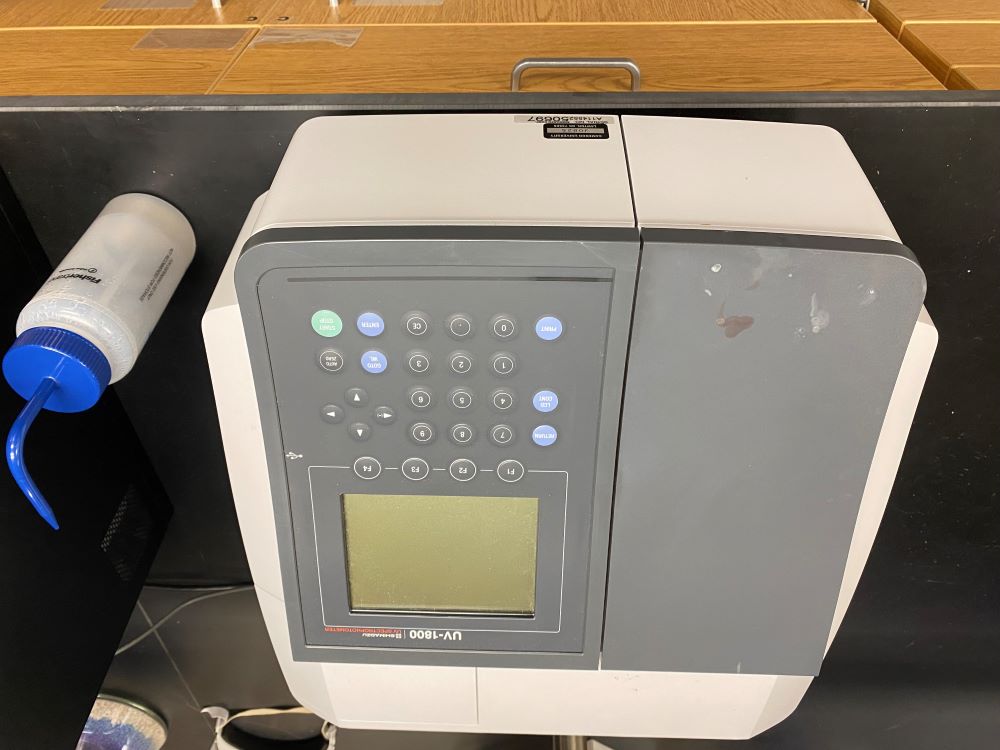
Fluorimeter RF-6000 by Shimadzu-
This instrument was acquired by Cameron University in 2017 and it does the same thing that the UV-Vis Spectrometer measures, except that this instrument measures emission, whereas the UV-Vis measures absorption. The student will first experience the instrument in Chem3232 (Quantitative Analysis). It is also utilized in Chem4025 (Instrumental Analysis), Chem4351 and 4361 (Physical Chemistry), Chem4332 (Advanced Inorganic Chemistry), and Chem4491 (Special Problems in Research).
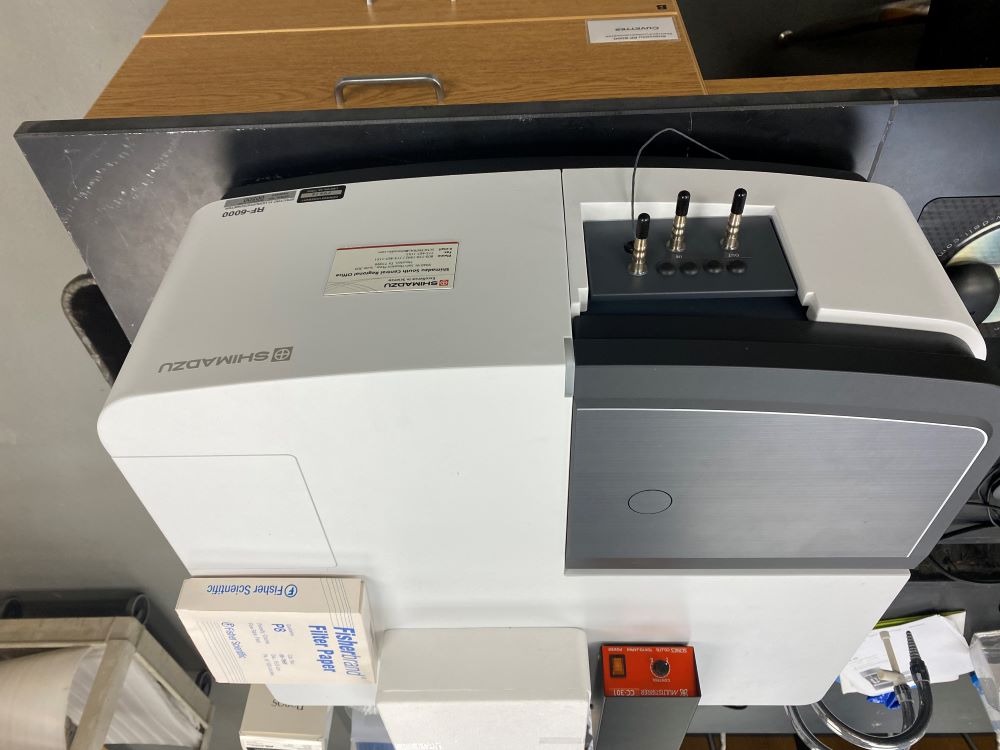
Atomic Absorption Spectrometer 7000 by Shimadzu-
This instrument was acquired by Cameron University in 2016 and it quantitates the determination of chemical elements using the absorption of optical radiation by free atoms in a gaseous state. It is also used to determine the metal ion concentrations in the solutions. The student will first experience the instrument in Chem3232 (Quantitative Analysis). It is also utilized in Chem4025 (Instrumental Analysis), Chem3334 (Chemistry of Water and Wastewater), and Chem4491 (Special Problems in Research).
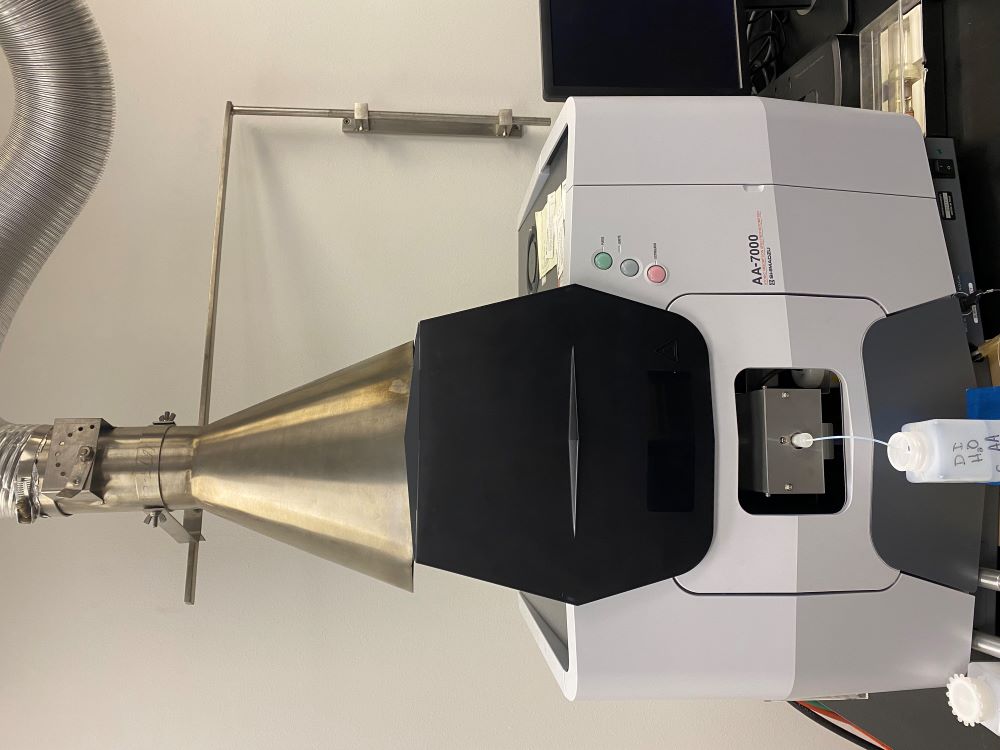
Planetary Ball Mill by mse supplies-
Planetary Ball Mills are used when very fine particles are required. In addition to mixing and size reduction processes, PBM also meets technical requirements for colloidal dimensions. They also provide the energy input necessary for mechanical alloying and other reactions. This instrument is mostly utilized in Special Problems in Chemistry (CHEM4491)
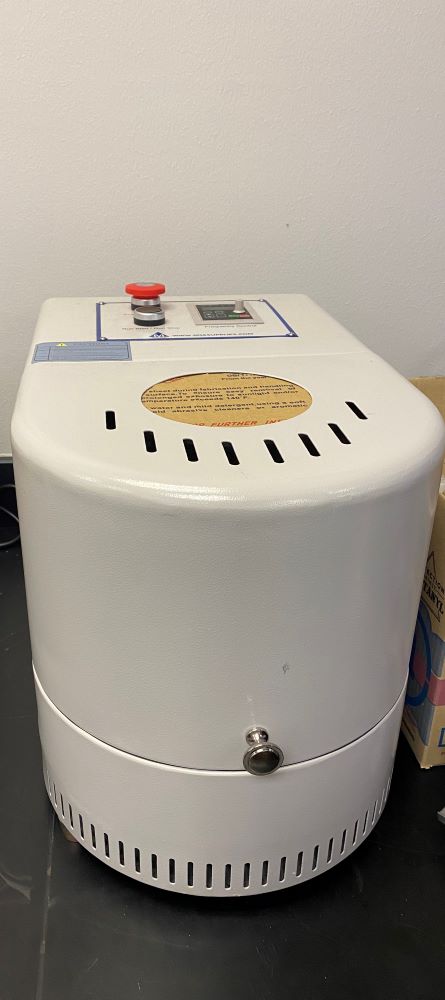
High Performance Liquid Chromatography by waters-
HPLC is used to separate a mixture of compounds in analytical chemistry and biochemistry. This facilitates the identification, quantification and purification of the components within the mixture. This instrument is mostly utilized in Special Problems in Chemistry (CHEM4491). However, this instrument is periodically used Instrumental Methods of Analysis (CHEM4025/4025L)
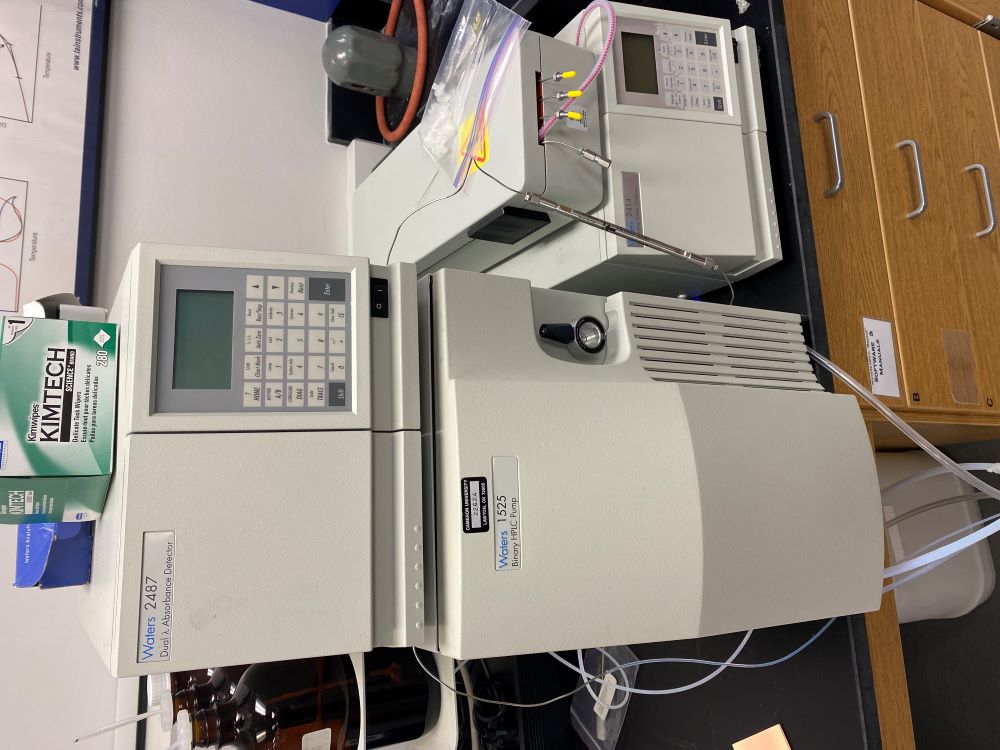
Gas Chromatography by varian-
GC Is used to separate mixtures of volatile compounds. This facilitates the identification, quantification and purification of the components within the mixture. This instrument is mostly utilized in Special Problems in Chemistry (CHEM4491). However, this instrument is periodically used Instrumental Methods of Analysis (CHEM4025/4025L)
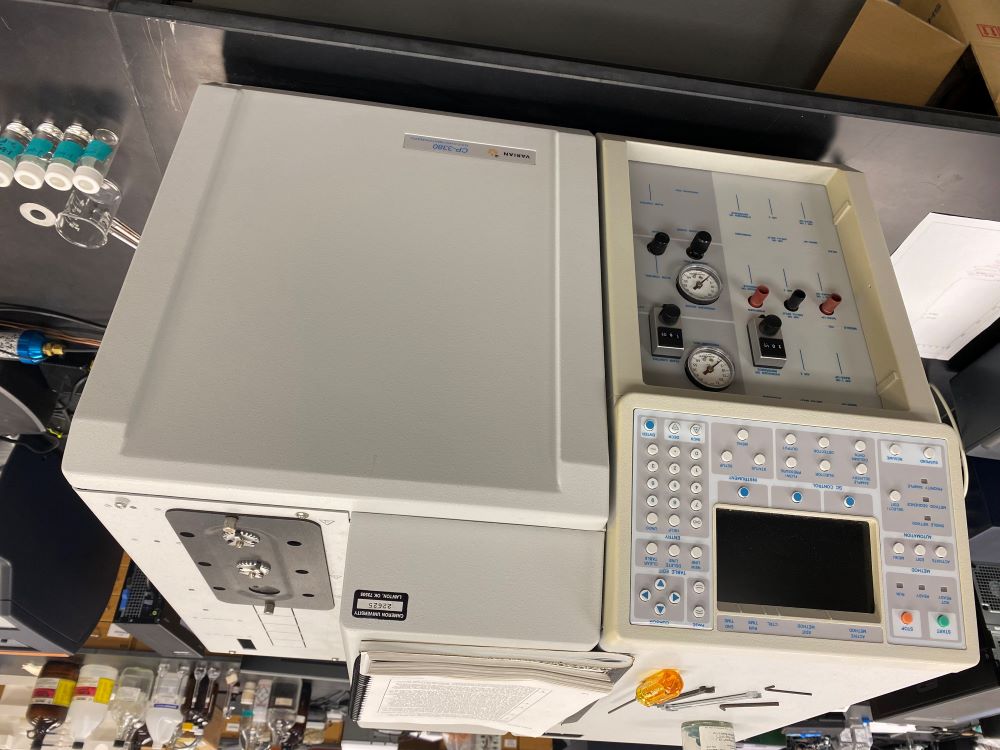
Vacuum Drying Oven by precision-
A vacuum drying oven is most often used for delicate drying processes, such as drying analytical standards, solid products of reactions or removing flammable solvents. The low-pressure environment also minimizes oxidation during drying. A standard vacuum oven can operate at temperatures as high as 200C to 250C. This machine is mostly utilized in Special Problems in Chemistry (CHEM4491)
